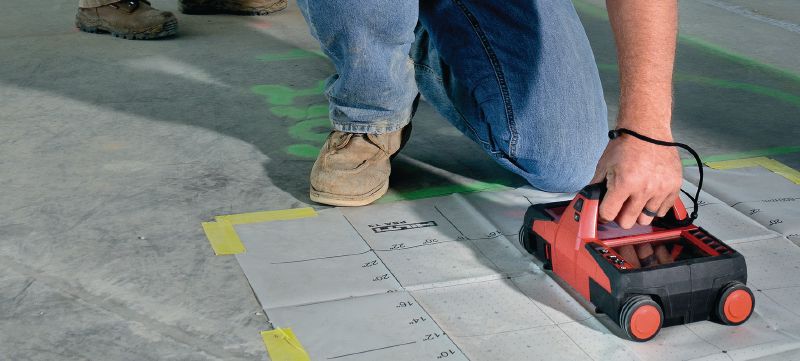Concrete Scanning: A Critical Action In The Direction Of Making Sure Structural Stability and Safety
In the world of building and framework maintenance, the value of concrete scanning can not be overstated. By using sophisticated modern technology and methods, concrete scanning serves as an essential tool in making sure that the integrity and security of structures and bridges are maintained to the highest requirements.
Importance of Concrete Scanning
Concrete scanning plays a critical role in making certain the structural honesty and safety of structures and framework projects. By using innovative technologies such as ground-penetrating radar (GPR) and electromagnetic induction, specialists can non-destructively inspect concrete structures to find potential flaws, spaces, ingrained objects, and support layout. This procedure enables early detection of abnormalities that can endanger the security of a framework, avoiding pricey damages and making certain the security of owners.
Prior to boring, cutting, or coring into concrete, scanning aids identify the accurate locations of rebar, post-tension wires, and other ingrained components, reducing the risk of unexpected hits that could lead to structural weak points. Furthermore, concrete scanning aids in quality control by validating the density of concrete covers and detecting any type of inconsistencies that might affect the overall longevity of the framework.
Modern Technology for Concrete Assessment

Advantages of Very Early Detection
Timely discovery of architectural concerns can significantly alleviate threats and guarantee the long life of building and construction jobs. By determining potential issues early on in the building procedure, stakeholders can take proactive steps to attend to concerns before they intensify into larger and a lot more costly issues. Among the crucial advantages of early detection is the prevention of structural failures, which can present serious safety and security hazards and lead to project hold-ups and monetary losses.
Additionally, very early detection enables timely repairs and maintenance, which can help extend the life expectancy of the structure. By dealing with issues immediately, building and construction groups can prevent expensive repair work or also the requirement for premature replacement of architectural parts. This proactive strategy not just saves money and time however likewise enhances the total security and resilience of the construction project.
In addition, early detection can improve task preparation and decision-making by offering stakeholders with beneficial insights right into the condition of the framework. Armed with this information, project see this supervisors can make educated selections relating to building and construction timelines, materials, and approaches, resulting in more effective and successful job end results.
Making Sure Structural Stability
Ensuring the structural stability of a building and construction job is extremely important to its safety and durability. Structural security refers to the capability of a structure or infrastructure to keep its form and function under numerous loads and ecological conditions. To accomplish this, comprehensive evaluation and surveillance of the structure are crucial. Concrete scanning plays a vital duty in ensuring structural security check this by detecting potential issues such as spaces, delamination, or support corrosion that might jeopardize the stability of the framework over time.
By utilizing innovative scanning technologies like ground-penetrating radar (GPR) and electromagnetic induction, construction professionals can non-invasively evaluate concrete structures to determine areas of problem under the surface. This aggressive strategy enables the early discovery Find Out More of problems or weaknesses, allowing timely repair services or reinforcement to stop architectural failures.
Regular concrete scanning during various building stages and throughout the life process of a framework can help keep its stability, mitigate threats, and make certain the security of occupants. By focusing on structural stability via concrete scanning, building tasks can improve their resilience and sturdiness, inevitably contributing to better security and durability.

Preventing Important Failures
Applying regular examinations, such as concrete scanning, can expose surprise issues like gaps, splits, or deterioration that could jeopardize the stability of a structure. By utilizing sophisticated scanning technologies like Ground Passing through Radar (GPR) or Concrete X-ray, designers can non-destructively examine the condition of concrete and recognize weak factors that call for support or repair work.

Conclusion
In verdict, concrete scanning plays a vital duty in ensuring structural honesty and security by making use of advanced innovation for very early discovery of possible issues. This proactive technique aids prevent vital failings and makes certain the stability of structures. It is important to focus on concrete assessment as a standard practice to safeguard the durability and security of structures and facilities.
Concrete scanning plays a crucial duty in ensuring the structural integrity and safety of buildings and infrastructure projects. Additionally, concrete scanning help in high quality control by confirming the thickness of concrete covers and discovering any type of inconsistencies that may affect the overall resilience of the structure. Concrete scanning plays an essential role in making certain architectural security by discovering prospective issues such as gaps, delamination, or support rust that could endanger the stability of the structure over time.

In conclusion, concrete scanning plays a crucial role in ensuring architectural stability and safety by utilizing innovative innovation for early detection of possible problems.
Comments on “Find RainierGPR Service Areas Near You for Expert Concrete Scanning”